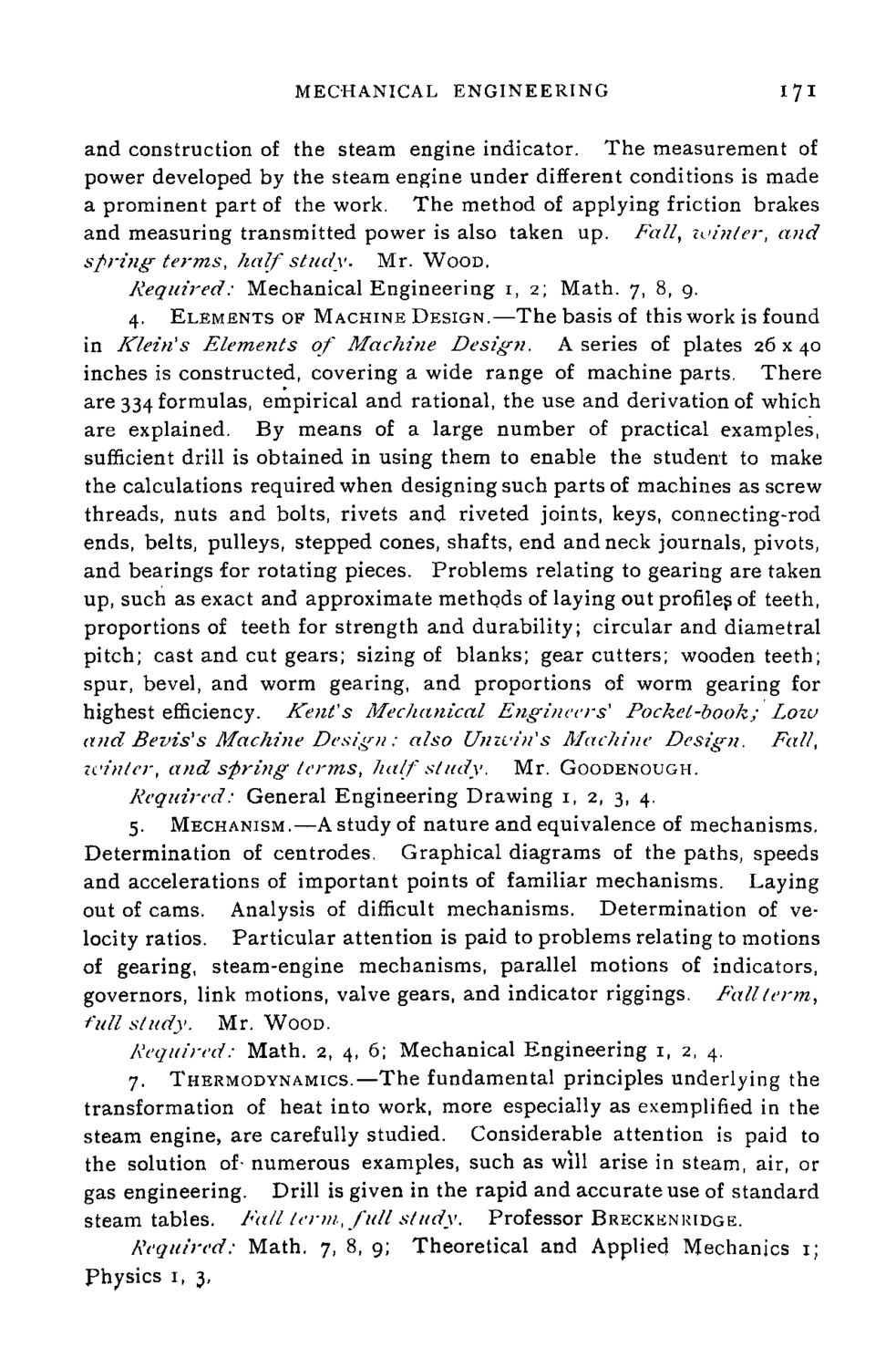| |
| |
Caption: Course Catalog - 1896-1897
This is a reduced-resolution page image for fast online browsing.

EXTRACTED TEXT FROM PAGE:
MECHANICAL ENGINEERING 171 and construction of the steam engine indicator. The measurement of power developed by the steam engine under different conditions is made a prominent part of the work. The method of applying friction brakes and measuring transmitted power is also taken up. Fall, zvinter, ana* spring terms, half study. Mr. WOOD. Required: Mechanical Engineering 1, 2; Math. 7, 8, 9. 4. ELEMENTS OF MACHINE DESIGN.—The basis of this work is found in Klein's Elements of Machine Design. A series of plates 26 x 40 inches is constructed, covering a wide range of machine parts. There are 334 formulas, empirical and rational, the use and derivation of which are explained. By means of a large number of practical examples, sufficient drill is obtained in using them to enable the student to make the calculations required when designing such parts of machines as screw threads, nuts and bolts, rivets and riveted joints, keys, connecting-rod ends, belts, pulleys, stepped cones, shafts, end and neck journals, pivots, and bearings for rotating pieces. Problems relating to gearing are taken up, such as exact and approximate methods of laying out profiles of teeth, proportions of teeth for strength and durability; circular and diametral pitch; cast and cut gears; sizing of blanks; gear cutters; wooden teeth; spur, bevel, and worm gearing, and proportions of worm gearing for highest efficiency. Kent's Mechanical Engineers' Pocket-book; Low and Bevis's Machine Design: also Unzi'iti's Machi?ie Design. Fall, zcinler, and spring terms, half study. Mr. GOODENOUGH. Required: General Engineering Drawing 1, 2, 3, 4. 5. MECHANISM.—A study of nature and equivalence of mechanisms. Determination of centrodes. Graphical diagrams of the paths, speeds and accelerations of important points of familiar mechanisms. Laying out of cams. Analysis of difficult mechanisms. Determination of velocity ratios. Particular attention is paid to problems relating to motions of gearing, steam-engine mechanisms, parallel motions of indicators, governors, link motions, valve gears, and indicator riggings. Fall term, full study. Mr. WOOD. Required: Math. 2, 4, 6; Mechanical Engineering 1, 2, 4. 7. THERMODYNAMICS.—The fundamental principles underlying the transformation of heat into work, more especially as exemplified in the steam engine, are carefully studied. Considerable attention is paid to the solution of- numerous examples, such as will arise in steam, air, or gas engineering. Drill is given in the rapid and accurate use of standard steam tables. Fall term, full study. Professor BRECKENRIDGE. Required: Math. 7, 8, 9; Theoretical and Applied Mechanics 1; Physics 1, 3,
| |